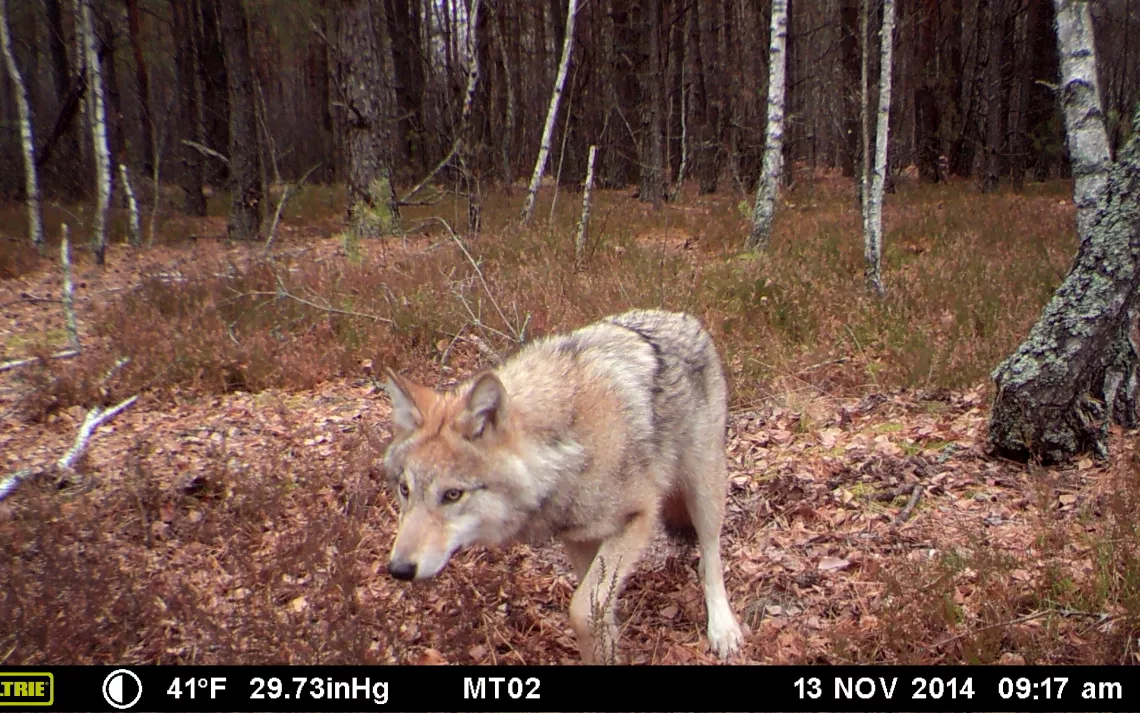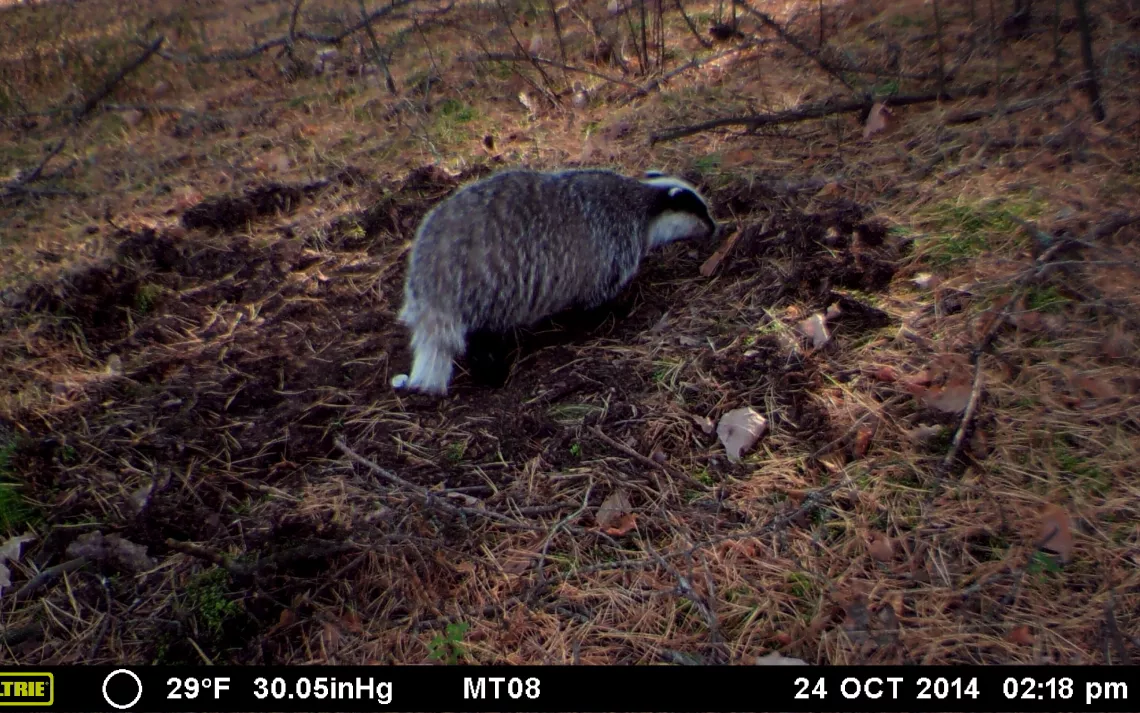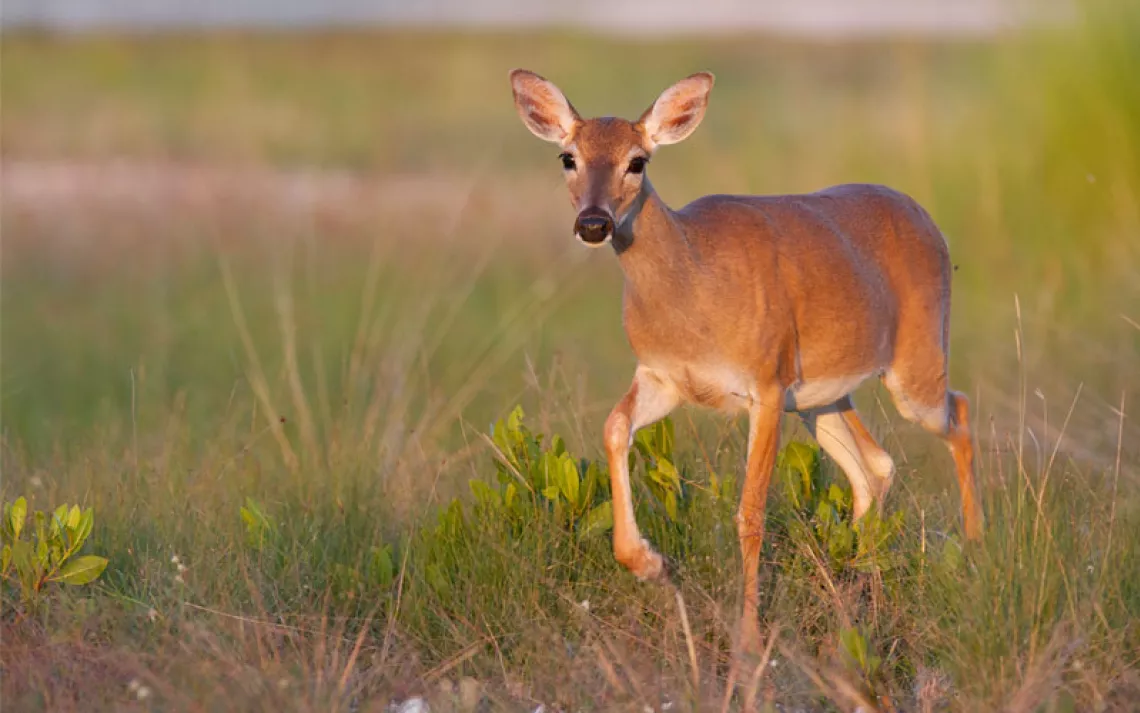Wasteland Wildlife
For most of us, mention of Ukraine’s Chernobyl nuclear power plant brings to mind sorrowful images of crumbling Soviet architecture and relics of families long gone. But a strikingly different set of images has emerged from Chernobyl, showing wolf packs prowling, endangered horses grazing, and plump boars scavenging.
PHOTOS BY JAMES BEASLEY AND SARAH WEBSTER | COURTESY OF NATIONAL GEOGRAPHIC
On a fall day in 2014, a team of scientists from the University of Georgia ventured down overgrown roads and through abandoned farm towns into the vast forest and marshland of Belarus’s Chernobyl Exclusion Zone (CEZ) to begin a month-long search for wolves, boars, and other carnivorous mammals.
The officially designated zone limits access to a site where, over 30 years ago, the Soviet-run Chernobyl nuclear power plant suffered a catastrophic meltdown. The 1986 explosion launched a plume of radioactive material into the skies, forcing residents across more than 2,900 square miles of modern-day Ukraine, Belarus, and Russia to evacuate and leaving the area’s wild inhabitants alone to endure the disaster without human interference.
Three decades later, it doesn’t take much imagination to picture what these abandoned animals might look like after years of radiation exposure (think Hollywood’s B-movie stereotypes of giant radioactive lizards and mutated three-eyed beasts).
 But James Beasley of the University of Georgia’s Savannah River Ecology Laboratory (and the research team who followed him into the CEZ in 2014) have photographic proof that reality is, thankfully, much different than fantasy. According to the group’s recent study, the carnivorous mammals in the area’s Belarusian section, called the Polesie State Radioecological Reserve (PSRER), appear very healthy—at least outwardly.
But James Beasley of the University of Georgia’s Savannah River Ecology Laboratory (and the research team who followed him into the CEZ in 2014) have photographic proof that reality is, thankfully, much different than fantasy. According to the group’s recent study, the carnivorous mammals in the area’s Belarusian section, called the Polesie State Radioecological Reserve (PSRER), appear very healthy—at least outwardly.
In the days and weeks following the 1986 nuclear disaster, the unstable atoms—called radionuclides—that had been violently ejected from the reactor core into the air and water during the explosion began to settle, seeping into the landscape like an invisible plague. At first, the local wildlife was devastated by acute exposure to isotopes, like iodine-131, that are short-lived but extremely destructive to living tissue.
But it didn’t take long for nature to bounce back. Within the first 10 years after the meltdown, biologists observed hooved animals such as red deer in population densities equal to or even higher than similar, uncontaminated habitats. Subsequent forays into the CEZ over the last two decades turned up more and more tracks, sightings, and live trappings that confirmed the tenacious presence of wildlife.
Now, Beasley’s team has discovered that the zone’s animals are making themselves at home in even the most dangerous, radioisotope-heavy areas. (Radioisotopes are not evenly distributed throughout the reserve because they were randomly scattered into the terrain by weather patterns at the time of the accident.)
Using unmanned motion sensor cameras baited with scents to attract wildlife, the researchers were able to survey the PSRER’s animal residents. Of the 17 species captured on film, red foxes, Eurasian boars, gray wolves, and raccoon dogs were seen enough times to allow for statistical modeling of their ranges. Moreover, these creatures weren’t all just visiting the most radiation-soaked areas—some were spending their entire lives there.
 That’s not to say the animals are somehow avoiding radiation exposure. All radioactive particles decay into inert substances over time, so the amount of radiation in the CEZ’s air is now roughly 100 times less than the day of the accident (which released 400 times more than the atomic bombing of Hiroshima). But, Beasley explains that radiation levels remain dangerously high, despite this reduction. And the most common isotope blanketing the reserve is cesium-137, a longer-lived particle that can move with unsettling ease through water into animal bodies.
That’s not to say the animals are somehow avoiding radiation exposure. All radioactive particles decay into inert substances over time, so the amount of radiation in the CEZ’s air is now roughly 100 times less than the day of the accident (which released 400 times more than the atomic bombing of Hiroshima). But, Beasley explains that radiation levels remain dangerously high, despite this reduction. And the most common isotope blanketing the reserve is cesium-137, a longer-lived particle that can move with unsettling ease through water into animal bodies.
“The wildlife have accumulated very high levels of contamination in their tissue, still today,” says Beasley. ”It’s in everything they eat and drink.” The isotope’s tendency to bioaccumulate by moving up the food web is one reason Beasley and his colleagues were keen to see how carnivores—the top of the food chain—are faring.
Furthermore, the impact of the lingering fallout on the animals’ internal health remains unknown. Although half of the cesium-137 emitted during the meltdown has now decayed into stable elements, the land will be radioactive for centuries.
Beasley hopes that new research will shed more light on how chronic, long-term exposure to radioactive materials has impacted ecosystems in Ukraine and Belarus, as well as newer nuclear disaster sites like Japan’s Fukushima. “The Chernobyl Exclusion Zone is now a living laboratory that we can use to learn from this experience,” he explains.
The Georgia-based scientist feels privileged to have visited the PSRER: “I describe it as an emotionally polarizing experience, because it’s a sad reminder of the human tragedy that occurred there, [but] at the same time, you see evidence of wildlife throughout the zone.”
“I don’t want the message to be that these accidents aren’t devastating,” notes Beasley. “But these sorts of findings are a bit of a silver lining.”

 The Magazine of The Sierra Club
The Magazine of The Sierra Club








